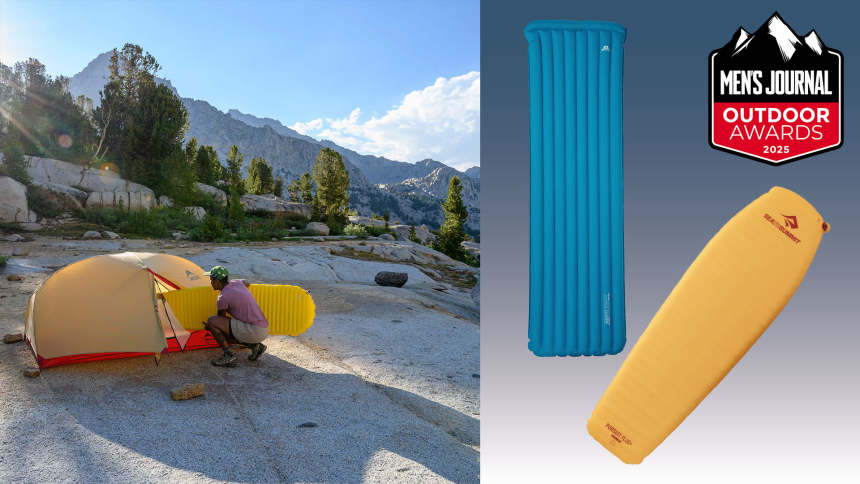Finding the right tools for your hair can feel like a real quest, especially when you have mixed-race hair. This hair type, you know, often brings with it a wonderful blend of textures, from wavy to curly, and even some coily sections, all on one head. Because of this unique blend, picking out the best straighteners for mixed race hair isn't just about grabbing any old hot tool; it’s about making a thoughtful choice that truly respects your hair’s distinct needs. So, it's almost like you're looking for a special partner for your hair, one that can handle its beautiful variety without causing any trouble.
Many folks with mixed-race hair often share similar concerns when it comes to heat styling. There's always that worry about causing damage, or perhaps not getting the hair as smooth as you'd like, or even dealing with frizz that seems to pop up out of nowhere. It's a common story, really, and it highlights why understanding what makes a straightener truly effective for your specific hair type is so important. We want to help you achieve those sleek, polished looks while keeping your strands happy and strong, which is obviously a good goal.
This guide is here to walk you through the ins and outs of choosing a heat styling tool that works wonderfully for mixed-race hair. We'll explore the features that truly make a difference, give you some tips on how to use these tools for the best results, and help you keep your hair looking its absolute best. You see, the "best" choice, as a matter of fact, really does depend on what your hair needs and what you want to achieve with it, just like choosing the best flavor of ice cream for yourself.
Table of Contents
- Understanding Mixed Race Hair
- Key Features to Look for in a Straightener
- Top Picks: Straighteners That Deliver
- Protecting Your Hair: Essential Prep and Aftercare
- Frequently Asked Questions
Understanding Mixed Race Hair
Mixed-race hair, as you might already know, is a beautiful tapestry of textures. It often means you have strands that range from loose waves to tight coils, all on the same head. This unique blend comes from a mix of different ancestral backgrounds, and it gives your hair a character all its own. In some respects, it's quite special because of its versatility.
What Makes It Unique?
The standout feature of mixed-race hair is its variety. You might notice that some sections of your hair are finer and more prone to frizz, while others are thicker and hold onto their curl pattern quite stubbornly. This can make styling a bit of a puzzle, as what works for one part of your hair might not work as well for another. It’s about finding a balance, you know, a way to cater to all these different needs.
Also, the moisture balance can be a bit tricky. Mixed-race hair can sometimes lean towards being dry, especially at the ends, because the natural oils from your scalp might not travel all the way down the hair shaft as easily on curlier textures. This means keeping your hair hydrated is a big part of keeping it healthy, and that's something to really keep in mind.
Common Challenges
One of the main struggles people often talk about is frizz. Because of the varied textures and the potential for dryness, frizz can appear pretty easily, especially in humid weather. Another common point of concern is heat damage. Since mixed-race hair can be delicate, using hot tools without proper care can lead to breakage or dullness. It’s like, you want to style it, but you also want to protect it, which is actually a very important balance.
Getting a consistently smooth and sleek look can also be a challenge. Some parts of your hair might straighten quickly, while others seem to resist, requiring more passes with a hot tool. This can lead to uneven results or the temptation to use higher heat, which is something we definitely want to avoid. Basically, it's about finding that sweet spot for all your hair.
Key Features to Look for in a Straightener
When you're searching for the best straighteners for mixed race hair, it’s not just about the brand name. It’s more about the specific features that will work with your hair's unique structure. Thinking about what was the best choice for this purpose, you really want to consider how each part of the tool will interact with your strands. You know, every little detail matters here.
Plate Material: Ceramic, Titanium, Tourmaline
The material of the straightener plates is, frankly, one of the most important things to consider. Each material offers something a little different for your hair.
Ceramic plates are often a popular choice because they distribute heat very evenly. This helps to reduce hot spots that could potentially damage your hair. They also tend to create a smooth glide, which is great for minimizing snagging. For mixed-race hair, ceramic can be a good option, especially if your hair is on the finer or medium side, or if you're worried about heat exposure. It's generally a gentler heat, so to speak.
Titanium plates, on the other hand, heat up very quickly and maintain a high, consistent temperature. They are also quite durable. Titanium is often recommended for those with very thick, coarse, or extremely curly hair because it can straighten these textures more effectively with fewer passes. However, because they get so hot, you need to be extra careful with temperature settings to avoid damage. They are, in a way, like the heavy-duty option.
Tourmaline plates, or ceramic plates infused with tourmaline, are another excellent option. Tourmaline is a semi-precious mineral that, when heated, releases negative ions. These ions help to seal the hair's cuticle, which means less frizz and a shinier finish. For mixed-race hair, which can sometimes be prone to frizz, tourmaline can be a fantastic choice. It combines the even heat of ceramic with the added benefit of frizz control, making it a very appealing option for many.
Temperature Settings: Why They Matter
Having adjustable temperature settings is, basically, non-negotiable. Mixed-race hair has a range of textures, and what works for one section might be too hot or not hot enough for another. A straightener that lets you choose your heat level gives you the control you need to protect your hair.
For finer or more delicate mixed-race hair, a lower temperature setting, say around 250-300°F (120-150°C), is often enough to achieve smoothness without causing undue stress. For thicker, coarser, or very curly sections, you might need a slightly higher temperature, perhaps 350-400°F (175-200°C), but it’s always best to start low and gradually increase the heat if needed. The goal, you see, is to get the job done with the least amount of heat possible.
Some straighteners even have digital displays for precise temperature control, which can be really helpful. This way, you’re not guessing, and you can be confident that you’re using the right amount of heat for your specific hair type. It’s about being smart with your styling, you know?
Plate Size and Shape
The size and shape of the straightener plates also play a big role in how effective and easy the tool is to use on mixed-race hair. It’s like, you wouldn't use a tiny brush for a huge canvas, would you?
Wider plates (1.5 to 2 inches) are often a good choice for those with a lot of hair, or very long, thick, or coily hair. They allow you to straighten larger sections at once, which can save you a lot of time. This can be especially helpful if you have a significant amount of hair to work through. For someone with very dense mixed-race hair, a wider plate can make the whole process much more efficient, which is definitely a plus.
Standard plates (1 inch) are quite versatile and work well for most hair types, including many mixed-race textures. They are good for medium-length hair and offer enough control for both straightening and creating waves or curls. They are, you know, a pretty safe bet for general use.
Narrower plates (0.5 to 0.75 inches) are perfect for shorter hair, bangs, or for getting really close to the roots. If you have fine sections or want to do detailed styling, a narrower plate gives you that precision. Sometimes, mixed-race hair can have different textures near the roots, and a smaller plate can help you manage those areas effectively. So, it's pretty much about getting into those tricky spots.
As for shape, straighteners with slightly rounded edges can be more versatile. They allow you to not only straighten but also create soft curls or waves, which is a nice bonus if you like to switch up your look. A straightener that can do more than one thing is, arguably, a better investment.
Ionic Technology and Infrared Heat
Beyond the plate material, some straighteners come with extra technologies that can really benefit mixed-race hair. These features are designed to make your hair smoother, shinier, and less prone to damage.
Ionic technology, as mentioned with tourmaline, works by releasing negative ions. These ions help to break down water molecules on the hair, allowing them to absorb into the hair shaft rather than sitting on the surface. This means less frizz, faster drying, and a smoother, more hydrated finish. For hair that tends to get frizzy, a straightener with ionic technology can be a real game-changer. It’s like, it helps your hair stay calm and collected.
Infrared heat is another feature to look for. Unlike traditional heat that heats the surface of the hair, infrared heat penetrates the hair shaft from the inside out. This allows for more efficient straightening at lower temperatures, which means less exposure to intense heat. For mixed-race hair, which can be delicate, using a straightener with infrared technology can help to minimize heat damage and preserve moisture. It’s a gentler way to get your hair straight, and that’s pretty cool.
Top Picks: Straighteners That Deliver
When we talk about the "best" straighteners for mixed race hair, it’s really about finding the tool that aligns with your specific hair texture and styling goals. As "My text" suggests, the "best relates to a course of action" or "what was the best choice for this purpose." So, let's look at the characteristics that make a straightener a top choice for different mixed-race hair needs, rather than just naming specific brands. This way, you can choose what works for you, which is obviously a good approach.
For Fine to Medium Mixed Hair
If your mixed-race hair tends to be on the finer side, or if you have medium thickness with a looser wave or curl pattern, you'll want a straightener that offers gentle yet effective heat. The best choice here would typically be a tool with high-quality ceramic or tourmaline-infused ceramic plates. These materials provide even heat distribution and help to smooth the cuticle without over-drying or burning delicate strands. You know, gentle is the key here.
Look for models with a wide range of adjustable temperature settings, allowing you to use lower heat. A straightener that goes down to 250°F (120°C) is ideal for these hair types. A standard 1-inch plate size is usually perfect for managing sections without being too bulky or too small. Ionic technology would be a big plus, as it helps to keep frizz at bay and add a nice shine to your hair. Basically, it’s about control and kindness to your hair.
For Thick, Coarse, or Very Curly Mixed Hair
For those with very thick, coarse, or tightly coiled mixed-race hair, you need a straightener that can handle the density and strong curl pattern efficiently. In this case, titanium plates are often the preferred choice. They get very hot and stay hot, which means fewer passes are needed to straighten resistant hair, ultimately reducing overall heat exposure. It's about getting the job done quickly and effectively, which is very important.
Opt for straighteners with wider plates, perhaps 1.5 to 2 inches, to tackle larger sections of hair at once. This saves a lot of time and effort. Precise digital temperature controls are still crucial here, even though you might use higher heat settings (up to 400-450°F or 200-230°C). You want to find the lowest effective temperature for your hair to minimize potential damage. Infrared heat technology can also be incredibly beneficial, as it helps to straighten from the inside out, preserving moisture. So, you're looking for real strength, but with smart features.
Protecting Your Hair: Essential Prep and Aftercare
Even with the best straighteners for mixed race hair, proper preparation and aftercare are, honestly, just as important as the tool itself. You could have the most amazing straightener, but without the right routine, your hair might still suffer. It’s like having a really fast car but forgetting to put gas in it, you know?
Heat Protectant is a Must
Before any heat styling, applying a good quality heat protectant is absolutely non-negotiable. This product creates a barrier between your hair and the heat, helping to minimize damage, lock in moisture, and prevent frizz. Look for heat protectants that offer protection up to the temperature you plan to use. Spray it evenly over damp, clean hair before blow-drying, and then again lightly before you start straightening. This step is, basically, your hair’s bodyguard.
There are many types of heat protectants, some are sprays, some are creams, and some are serums. Choose one that suits your hair's texture and needs. For mixed-race hair, a product that also offers moisturizing benefits or helps with frizz control would be an excellent choice. This is very important for maintaining hair health.
Proper Sectioning and Technique
To get the best results and protect your hair, sectioning is key. Divide your hair into small, manageable sections, about 1 inch wide and not too thick. This ensures that the straightener can reach all strands evenly and effectively, meaning you won't have to go over the same section multiple times. Using a comb to guide the straightener through each section also helps to achieve a smoother finish. You know, patience here really pays off.
When you pass the straightener through your hair, do it in one smooth, steady motion. Avoid clamping down too hard or lingering in one spot, as this can cause heat damage. One or two slow passes should be enough if you're using the right temperature and have a good quality straightener. It’s about being efficient and gentle, you know, just a little care goes a long way.
Post-Straightening Care
Once your hair is straight, a few finishing touches can make a big difference. A lightweight hair serum or a few drops of natural oil (like argan or jojoba oil) can add shine, tame any stray flyaways, and provide extra moisture. Apply it sparingly to the mid-lengths and ends of your hair. This helps to seal the cuticle and keep your hair looking sleek for longer. It’s like the final polish, basically.
Also, try to avoid over-straightening your hair. Give your hair breaks from heat styling whenever you can. Embracing your natural texture on some days can give your hair a much-needed rest and help it stay healthy in the long run. Remember, the "best" routine for your hair is one that balances styling with care, which is a pretty good way to think about it.
For more insights on keeping your hair healthy, learn more about hair care tips on our site. And to discover other great products that support hair health, you might want to check out this page for more options.
Frequently Asked Questions
What type of straightener is best for mixed race hair?
The "best" type really depends on your specific hair texture, you know. For finer or medium mixed-race hair, ceramic or tourmaline-infused ceramic straighteners are often a great choice because they offer even, gentle heat. If your hair is very thick, coarse, or tightly curly, titanium straighteners can be more effective as they provide higher, consistent heat to smooth those stronger curl patterns. Always look for adjustable temperature settings, so you can tailor the heat to your hair's needs, which is very important.
How do I straighten mixed race hair without damage?
To straighten mixed-race hair without causing damage, several steps are pretty crucial. First, always apply a high-quality heat protectant before you start. Second, use the lowest effective temperature setting on your straightener; don't just crank it up to the maximum. Third, work in small, manageable sections, passing the straightener through each section in one smooth, steady motion, avoiding multiple passes or lingering in one spot. Lastly, make sure your hair is completely dry before applying heat. Basically, it’s about being careful and prepared.
Can mixed race hair be straightened permanently?
Yes, mixed-race hair can be chemically straightened permanently through treatments like relaxers or keratin treatments. However, these are chemical processes that change the hair's structure and often require professional application. They are different from using a heat straightener, which provides a temporary change. While these treatments can offer long-lasting straightness, they also come with their own set of considerations regarding hair health and maintenance. It's a big decision, so it's probably best to talk with a hair professional about it first.
For additional insights into hair care and styling, you can find a lot of useful information on reputable beauty and hair care sites, like Allure's guide on straightening curly hair. This resource, you know, often provides good general advice that can be adapted for mixed-race textures.



